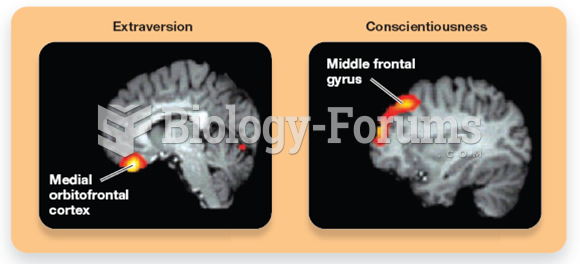|
|
|
The cure for trichomoniasis is easy as long as the patient does not drink alcoholic beverages for 24 hours. Just a single dose of medication is needed to rid the body of the disease. However, without proper precautions, an individual may contract the disease repeatedly. In fact, most people develop trichomoniasis again within three months of their last treatment.
Thyroid conditions cause a higher risk of fibromyalgia and chronic fatigue syndrome.
Malaria mortality rates are falling. Increased malaria prevention and control measures have greatly improved these rates. Since 2000, malaria mortality rates have fallen globally by 60% among all age groups, and by 65% among children under age 5.
The Romans did not use numerals to indicate fractions but instead used words to indicate parts of a whole.
People about to have surgery must tell their health care providers about all supplements they take.






